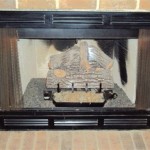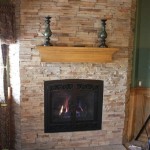Small Wood Burning Fireplaces: Heating and Ambiance for Compact Spaces
Wood-burning fireplaces have long been cherished for their warmth, ambiance, and the primal connection they offer to a traditional heat source. While traditionally associated with larger homes and expansive hearths, the market now offers a variety of small wood-burning fireplaces perfectly suited for compact spaces. These smaller models provide the aesthetic appeal and heating benefits of their larger counterparts without overwhelming smaller rooms or requiring extensive renovations.
The key to successfully incorporating a small wood-burning fireplace lies in understanding their specific design considerations, heating capabilities, and installation requirements. Careful planning and adherence to safety guidelines are crucial for ensuring efficient and safe operation within a smaller environment.
Space Considerations and Model Selection
The most significant factor when choosing a small wood-burning fireplace is the size of the room in which it will be installed. Overheating is a common concern in smaller spaces, so selecting a fireplace with a suitable British Thermal Unit (BTU) rating is paramount. BTU rating indicates the amount of heat the fireplace can produce per hour. Aim for a BTU output that aligns with the square footage of the room. A fireplace with a significantly higher BTU output than required will result in an uncomfortable and potentially unsafe environment.
Beyond BTU output, the physical dimensions of the fireplace itself are equally important. Measure the available space carefully, considering not only the footprint of the unit but also required clearances from combustible materials. Local building codes dictate minimum clearance distances, which are essential for preventing fire hazards. These clearances typically apply to walls, ceilings, flooring, and furniture surrounding the fireplace.
Several types of small wood-burning fireplaces are available, each with its own advantages and disadvantages. Freestanding models are often the simplest to install, requiring only a level surface and a connection to a chimney or vent. Insert models are designed to be installed within existing fireplace openings, offering a convenient option for upgrading an older, inefficient fireplace. Wall-mounted fireplaces offer a contemporary aesthetic and can save floor space. Finally, corner fireplaces are specifically designed to fit into the corner of a room, maximizing space utilization.
Consider the overall aesthetic of the room when selecting a fireplace. Small wood-burning fireplaces are available in a variety of styles, ranging from traditional cast iron designs to modern, minimalist models. Choose a fireplace that complements the existing décor and enhances the overall ambiance of the space.
Installation and Venting Requirements
Proper installation is crucial for the safe and efficient operation of any wood-burning fireplace, but it is especially critical in smaller spaces where ventilation and clearances are often limited. Unless experienced with fireplace installation and knowledgeable about local building codes, professional installation is highly recommended. A certified installer will ensure that the fireplace is installed correctly and that all safety requirements are met.
The venting system is a critical component of a wood-burning fireplace. Chimneys are the most common venting option, providing a natural draft that draws smoke and combustion gases out of the room. However, installing a chimney can be a complex and expensive undertaking, especially in existing homes. Alternatively, some small wood-burning fireplaces can be vented using specialized vent pipes, which can be routed through walls or ceilings to the exterior of the building. These vent pipes must be specifically designed for use with wood-burning fireplaces and installed according to the manufacturer's instructions and local codes.
Regardless of the venting method, it is essential to ensure that the venting system is properly sized and installed to provide adequate draft and prevent the backflow of smoke into the room. Regular inspection and cleaning of the venting system are also necessary to maintain optimal performance and prevent creosote buildup, which can pose a fire hazard. Creosote is a byproduct of wood combustion that accumulates inside the chimney or vent pipe. Professional chimney sweeps can remove creosote buildup and ensure that the venting system is in good working order.
Prior to installation, obtain all necessary permits from the local building department. Most jurisdictions require permits for the installation of wood-burning fireplaces to ensure compliance with building codes and safety regulations. The permit process typically involves submitting plans and specifications for the fireplace and venting system, as well as undergoing inspections to verify that the installation meets code requirements.
Safety Considerations and Best Practices
Operating a wood-burning fireplace safely requires adherence to several best practices. Always use seasoned firewood, which has a moisture content of less than 20%. Seasoned firewood burns cleaner and more efficiently, producing less smoke and creosote than green or wet firewood. Avoid burning treated wood, painted wood, or other materials that can release harmful chemicals into the air.
Never leave a wood-burning fireplace unattended while it is burning. Keep a close eye on the fire and ensure that the fire screen is in place to prevent sparks from escaping. Install smoke detectors and carbon monoxide detectors in the room where the fireplace is located and test them regularly to ensure that they are functioning properly. Carbon monoxide is a colorless, odorless gas that can be produced by incomplete combustion. It is essential to have working carbon monoxide detectors to alert occupants of a potential hazard.
Store firewood safely away from the fireplace and other heat sources. Keep a fire extinguisher nearby in case of emergencies. Educate all members of the household, especially children, about fireplace safety rules. Teach them not to play near the fireplace and to never throw anything into the fire.
Regular maintenance is essential for keeping a wood-burning fireplace in good working order. Inspect the fireplace and venting system regularly for signs of damage or deterioration. Repair any cracks or leaks in the fireplace or chimney. Clean the fireplace regularly to remove ashes and debris. Schedule annual inspections by a qualified chimney sweep to ensure that the venting system is clean and in good condition.
Consider the impact of wood burning on air quality. Wood smoke can contribute to air pollution, especially in areas with high concentrations of wood-burning stoves and fireplaces. Check local regulations regarding wood burning and follow any restrictions that may be in place. Explore alternative heating options, such as gas fireplaces or electric fireplaces, which produce less air pollution.
Selecting a small wood-burning fireplace involves carefully considering the room size, BTU rating, fireplace dimensions, and venting requirements. Proper installation and adherence to safety guidelines are crucial for ensuring safe and efficient operation. By following these recommendations, homeowners can enjoy the warmth and ambiance of a wood-burning fireplace in their compact spaces without compromising safety or air quality.
The aesthetic impact of a small wood-burning fireplace should also be considered. Does the style complement the existing decor? The fireplace can become a focal point of the room, so choosing a design that enhances the overall ambiance is important. Traditional cast iron models offer a rustic charm, while modern, minimalist designs can create a sleek and contemporary look. The choice depends on the individual homeowner's preferences and the existing style of the space.
Ultimately, a small wood-burning fireplace can be a valuable addition to a compact space, providing supplemental heat, aesthetic appeal, and a cozy atmosphere. However, it's essential to approach the selection, installation, and operation of the fireplace with careful planning and a strong focus on safety.

Comparing Wood And Propane Heat Tiny Stove

The Hobbit Stove Eco Design Approved Salamander Stoves

Best Wood Fireplaces For Small Spaces

My Scandinavian Home Cabin Update Our Cosy Wood Burning Stove

A Tiny Wood Stove Is The Cozy Glow Heater Your Cabin Needs Sunset

Best Small Wood Stoves For Cabins Forestry Reviews

7 Indoor Firewood Storage Solutions Wood Stove Decor Fireplace

Best Wood Fireplaces For Small Spaces

Keep Tiny Living Space Toasty With Mini Wood Stove Cubic

A Tiny Wood Stove Is The Cozy Glow Heater Your Cabin Needs Sunset
Related Posts








